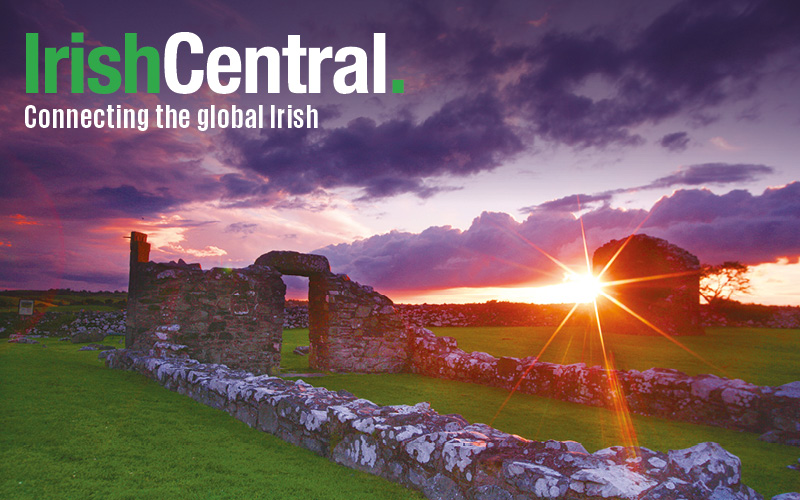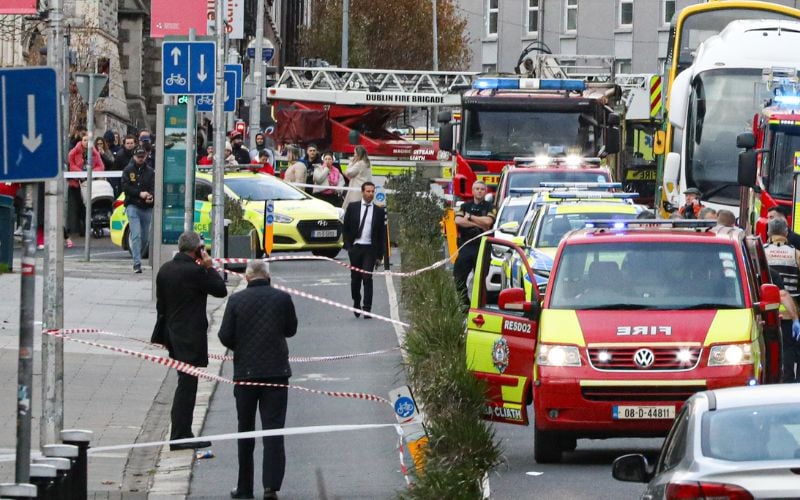Ben Schuman remembered how every year his family would cram into his Irish-Catholic grandmother’s small Rochester, N.Y., home for the holidays. On Christmas Eve, Schuman’s father would light the Hanukkah menorah that sat on the living room table. Next to the table stood a short Christmas tree, surrounded by presents wrapped in paper decorated with menorahs and dreidels.
Schuman, son of a Jewish father and an Irish Catholic-converted-to-Jewish mother, would sing with his family the Hanukkah blessings in Hebrew as his Catholic grandmother looked on. As the flames from the Shamas, the middle candle on the menorah, and the other candles burned, his grandmother would bake Christmas cookies for the following morning. Schuman recalled enjoying the cookies as his family opened their Hanukkah-wrapped Christmas presents on Christmas morning.
“It was never an issue why we celebrated Christmas,” said Schuman, 24. “There was no intent to separate.”
For Schuman, being Irish and Jewish often meant balancing two different faiths and two different cultures. Raised Jewish in Queens, Schuman’s wavy blond hair, blue eyes and pale skin made his appearance different from what many consider a typical Jewish look.
But the “typical Jewish look” in America is changing. The latest study of the country’s 5.2 million Jews in 2001 found that 47 percent of Jews who married from 1996 to 2001 had spouses from other faiths, up from 38 percent in the 1980s. Two-thirds of children raised in interfaith marriages were not raised Jewish, according to the 2001 National Jewish Population Survey, the latest survey of American Judaism.
There has been concern over intermarriage in Judaism for as long as there have been Jews, but the debate today over how to handle it is more urgent than ever. The major Jewish denominations are divided.
In the more progressive Reform movement, Jews wage the debate over whether Rabbis should officiate half-Jewish weddings, and how to welcome parents who aren’t Jewish but are raising their children Jewish into the congregation. In Conservative Judaism, interfaith weddings are not allowed, and there is debate over what to do with Jewish children who do not have Jewish mothers. To answer the seemingly simple question, “Who is a Jew?” often depends who you ask.
Lily Corwin Berman, a history and Jewish studies professor at Pennsylvania State University, said the issue has the potential to create a schism in the Jewish community, particularly because the Jewish leadership is uncomfortable addressing the issue.
“They don’t really know what to do about it, and therefore the predominant approach is to avoid the issue,” said Jack Wertheimer, a professor at the Jewish Theological Seminary, a Conservative institution. “There is very little public discussion about it, and those who do try to raise the issue publicly are stigmatized.”
While Jewish leaders continue to debate intermarriage, the children growing up in intermarried households often feel the effects of two competing cultures. Robin Fine, 38, grew up in Co-Op City in the Bronx with an Irish bartender for a father and a first generation Polish and Russian Jew for a mother. When her parents married in 1967, it was a “helluva big deal,” Fine said, and her father changed his last name from Flynn to Fine for the marriage, though he didn’t change religions.
“My grandmother was a surly old Jewish woman, and intermarriage was a very American thing - you just didn’t do that,” said Fine, who now lives in Sunnyside, Queens. “She was very accommodating of it, better than some of the others. People would stop talking to the family because of that.”
Fine’s Co-Op City neighborhood was full of mixed couples, because her parents’ generation all married someone “they weren’t supposed to,” she said. “You only knew what somebody was if you saw both parents in the playground.” Fine said.
But not everyone was accepting or understanding of Fine’s mixed heritage. In elementary school, Fine’s teacher asked her students to share their heritage, she recalled. When it was her turn, Fine told the class she was an Irish Jew. “My teacher told me that didn’t exist,” she said.
“It was interesting, because for the other Jews, I wasn’t Jewish enough. And the Irish were just perpetually mystified,” Fine said. “Almost every other day, my dad would say to us, ‘Good morning. Do you remember you’re Irish?’ ”
In Ireland, there is a small community of about 2,000 genuine Irish Jews. But the experience is different for Irish Jews in the U.S. like Schuman, who are mostly that way through intermarriage.
Growing up in Queens, Schuman said he felt more Jewish than Irish, likely because his mother did not have a good experience being raised in Catholic schools and she liked the Jewish religion. He recognizes now some things in his house were Irish, like music, food and decorations, which he didn’t notice as a child. He called his Irish grandmother Bubby, a typical Jewish nickname, and he didn’t realize it was a Yiddish word until he was 10. He stopped using the name for a few years - he said he was “self-conscious” about it - but as he got older he reverted back to Bubby.
Schuman went to Brazil for a study abroad trip his junior year of college, where he said he began embracing his dual identity. “It was the first time I noticed I didn’t look as American,” he said. “When I told them I was American, people would say, ‘Oh, you’re American. But where are you really from?’ I’d say, ‘I’m a Jew.’ ‘No.’ ‘Eastern European?’ ‘No.’ ‘Irish?’ ‘Yes!’”
Last year, Schuman took a free trip to Israel through Birthright, a subsidized program that seeks to strengthen the ties to of Jews around the world to Israel and the religion (full disclosure: the reporter went on a Birthright trip in 2006). While the rationale behind the trip, which is for anyone ages 18 to 25 with family ties to Judaism, is focused on raising support for Israel, Corwin Berman said early studies have found Birthright participants are more interested in marrying a Jewish partner than Jews who do not go.
In New York, just 10 percent of Reform Rabbis officiate interfaith marriage ceremonies, said Wendy Levinson, assistant director of the Union for Reform Judaism. That number is lower than elsewhere in the U.S., Levinson said, because New York has a large and vibrant Jewish population, meaning more potential partners.
Rabbi Serge A. Lippe of Brooklyn Heights Synagogue, 131 Remsen St., Brooklyn, does not officiate intermarriages, but said the more important issue is ensuring that non-Jews are welcomed into the congregation. His congregation allows non-Jews to participate in all parts of the service except blessing the Torah, because the synagogue wants its non-Jews who are raising their children Jewish to be comfortable.
“We’re not interested in creating clear visual demarcations,” said Lippe, adding that people don’t have to be Jewish “to be part of the community or welcomed to synagogue.”
Schuman, who attended Jewish day school through eighth grade and went to a Conservative synagogue for Shabbat nearly every weekend growing up, said he has become less Jewish since going to college. But he still strongly identifies with the religion, keeping kosher mostly out of habit and never missing High Holy Day services. At the same time, he’s gained interest in learning about his Irish roots, and said he will definitely visit the Emerald Isle one day.
“Being Jewish, I was told I don’t fit the package mostly because I didn’t look it,” Schuman said. “There was always that kind of gap there. I think the Irish fills that gap.”
Jeremy Herb is a student at the Columbia University Graduate School of Journalism. In March, along with his Covering Religion class, he went to Ireland on a reporting trip. To see the class Web site, go to "Beyond the Brogue."




Comments